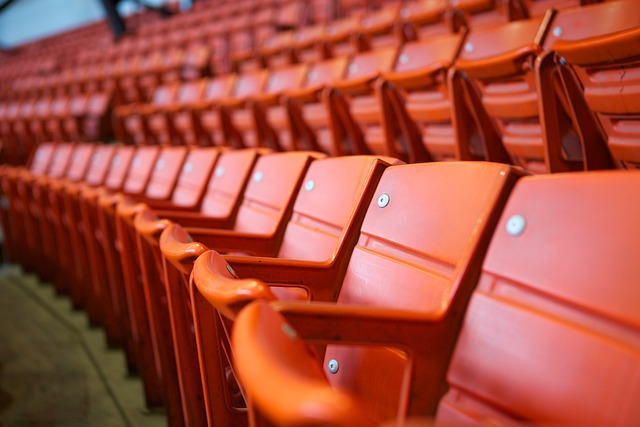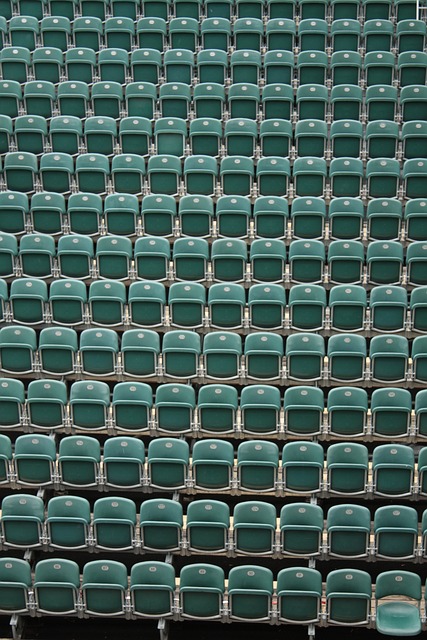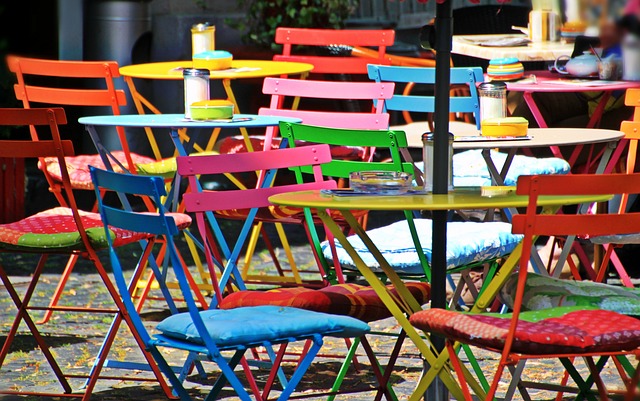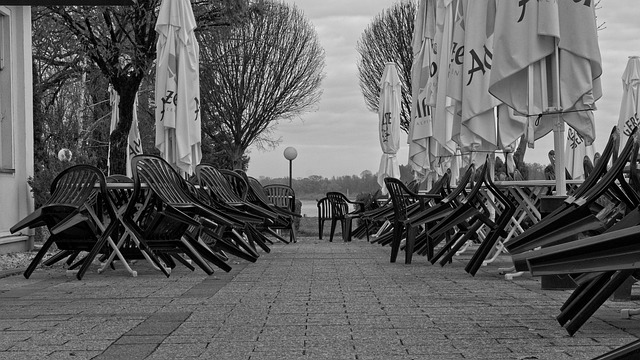When selecting outdoor seating, durability and environmental resistance are paramount. Teak wood, aluminum, all-weather wicker (resin or polyethylene), powder-coated steel, and recycled plastic are top choices for their weatherproof and low-maintenance qualities. Aluminum is particularly favored for its lightweight yet strong properties, excellent resistance to corrosion and fading, and versatility in design. Recycled plastic offers an eco-friendly alternative that mimics the look of wood while providing superior longevity and weather resistance. HDPE composites are highly resistant to chemicals, moisture, and UV rays, ensuring hygienic and long-lasting seating without significant deterioration over time. Weather-resistant wood, treated for endurance against rot, decay, and pests, is another sustainable option that maintains its natural beauty with minimal maintenance. High-performance plastics and resins are the ultimate low-maintenance solutions, offering diverse colors and textures while being recyclable and producing less energy than alternatives, resulting in a smaller environmental footprint. These materials not only enhance the aesthetic of outdoor spaces but also ensure comfort, lasting performance, and a responsible approach to sustainability for years to come. Outdoor seating made from these advanced materials is a smart investment for both home and commercial use, offering resilience, style, and comfort in one package.
Outdoor seating is a critical component of public spaces, commercial establishments, and residential areas, serving both functional and aesthetic purposes. The durability of these settings is paramount, as they are subjected to the elements and a multitude of users. This article delves into the most resilient materials for crafting outdoor seating solutions that withstand the test of time and environmental conditions. We explore the longevity of weather-resistant wood, high-performance plastics, stainless steel alloys, and composite materials, each offering unique advantages. Additionally, we provide maintenance tips to extend their lifespan, discuss design innovations for enhanced ergonomics and sustainability, and highlight the importance of color and texture in material selection. By understanding the best practices for outdoor seating durability, we can ensure these spaces remain comfortable, safe, and inviting for years to come.
- Understanding Durability in Outdoor Seating: Materials and Their Longevity
- The Top Durable Materials for Outdoor Seating
- – Weather-Resistant Wood
- – High-Performance Plastics and Resins
Understanding Durability in Outdoor Seating: Materials and Their Longevity

When selecting materials for outdoor seating, durability is a paramount consideration to ensure longevity and withstand the elements. High-quality, weather-resistant materials such as teak wood, aluminum, and all-weather wicker are renowned for their resilience against rain, wind, and sunlight. Teak, in particular, is highly durable due to its natural oils and dense grain, which make it resistant to rot, decay, and insect infestation. Aluminum offers a lightweight yet sturdy option that won’t rust or corrode, making it an excellent choice for both residential and commercial outdoor seating areas. All-weather wicker, often made from high-grade resin or polyethylene fibers, mimics the natural look of traditional wicker without the need for constant maintenance. These materials not only enhance the aesthetic appeal of outdoor spaces but also provide a comfortable and durable seating solution that can endure the test of time.
Outdoor seating must be able to withstand a variety of harsh conditions, from intense UV rays to moisture and temperature fluctuations. Materials like powder-coated steel or recycled plastic are engineered for durability and sustainability. Powder-coated steel combines the strength of metal with a protective coating that prevents rust and fading, while recycled plastic materials, such as those from brands that specialize in eco-friendly outdoor furniture, offer a sustainable alternative that is both tough and weatherproof. These materials are designed to maintain their integrity, ensuring that the outdoor seating remains functional and appealing for years to come. Selecting the right materials for outdoor seating requires careful consideration of the environment in which they will be used, the expected level of usage, and the maintenance requirements to ensure a long-lasting solution for any setting.
The Top Durable Materials for Outdoor Seating

When designing outdoor seating solutions, durability is paramount to withstand the elements and maintain comfort and safety for users over time. Aluminum stands out as a top choice for its lightweight yet robust nature, resistance to corrosion, and ability to retain its appearance even after prolonged exposure to the sun and rain. It’s also highly malleable, allowing for diverse design possibilities without compromising on strength. Another material that has gained popularity is recycled plastic, which offers unparalleled longevity and weather resistance. This eco-friendly option resembles wood in appearance but is immune to rot, pests, and fading, making it an excellent sustainable alternative for those seeking low-maintenance outdoor seating. Additionally, composites such as HDPE (High-Density Polyethylene) are renowned for their resilience against chemicals, moisture, and UV rays, providing a hygienic and durable option that can last for decades without significant degradation. These materials not only enhance the longevity of outdoor seating but also contribute to reducing waste by repurposing materials that might otherwise end up in landfills.
– Weather-Resistant Wood

When selecting durable materials for outdoor seating solutions, weather-resistant wood stands out as a sustainable and aesthetically pleasing option. Unlike traditional timber, this wood is specifically treated to withstand various environmental elements, ensuring longevity and minimal maintenance. Its natural grain patterns and versatility in design make it an ideal choice for creating comfortable and visually appealing seating arrangements that blend seamlessly with natural surroundings. The treatment process often includes advanced technologies such as pressure treatment or the use of weatherproof coatings, which protect the wood from rot, decay, and pest infestations, making it a robust solution for outdoor environments.
Furthermore, the choice of weather-resistant wood extends beyond mere practicality; it also encompasses environmental responsibility. Sustainably sourced and treated with eco-friendly methods, this material reduces the ecological footprint of outdoor furniture, aligning with the growing trend towards sustainable living. The durability of weather-resistant wood means fewer replacements over time, which not only saves resources but also contributes to cost efficiency in the long run for both public and private spaces. Its ability to endure the test of time and various climatic conditions makes it a top choice for outdoor seating solutions where comfort, design, and sustainability converge.
– High-Performance Plastics and Resins

When selecting durable materials for outdoor seating solutions, high-performance plastics and resins stand out for their exceptional weather resistance and longevity. These advanced materials are specifically engineered to withstand the harsh elements, offering a maintenance-free alternative to traditional wood or metal options. The robust nature of these plastics means they resist fading, cracking, and warping that can occur from exposure to sunlight, rain, and temperature fluctuations. Additionally, high-performance plastics are often designed with built-in UV protectants and are available in a variety of colors and textures, allowing for a versatile aesthetic that complements different design styles while ensuring the comfort and longevity of outdoor seating arrangements.
Incorporating high-performance plastics and resins into outdoor seating not only guarantees durability but also sustainability. These materials are frequently made from recyclable content, reducing environmental impact. They also typically require less energy to produce compared to other materials, contributing to a lower carbon footprint over time. The long lifespan of these products means fewer replacements and, consequently, less waste, making them an eco-friendly choice for outdoor spaces in both residential and commercial settings. These plastics are designed to provide years of reliable use without sacrificing style or comfort, making them an excellent investment for any outdoor seating application.
When selecting outdoor seating solutions, durability is paramount to withstand the elements and maintain comfort and aesthetic appeal. This article has highlighted the top durable materials for such applications, focusing on weather-resistant wood and high-performance plastics and resins. These materials not only offer longevity but also enhance outdoor spaces, making them ideal for diverse environments. As outdoor living spaces become a priority in design and lifestyle choices, understanding the materials that ensure enduring seating becomes increasingly important. Homeowners and businesses alike can confidently choose from these durable options to create inviting and resilient outdoor areas that stand the test of time.
